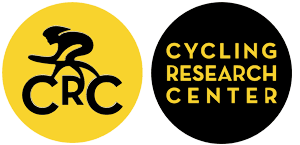The Effect of Rate of W′ Utilisation and Acute Fatigue on W′ Reconstitution
Keywords:
critical power, W’, cycling performance, exercise toleranceAbstract
The critical power (CP) and W′ concept has become more integrated within applied cycling performance science. Both parameters can be assessed in the laboratory and field and have become a useful tool for coaches and athletes (Leo et al. 2022; Moritani et al. 1981; Poole et al. 1988; Spragg, Leo, and Swart 2022). It is possible to mathematically model the depletion and recovery of W′ during intermittent exercise (Skiba et al., 2012, Skiba and Clarke, 2021). Exercising at a work rate higher than CP causes a reduction in W' whereas when exercising at a work rate below CP there is an exponential reconstitution of W' (W′REC) that is dependent on the recovery duration and a reconstitution time constant (τW'). This is contingent on the difference between recovery power output and CP (DCP) (Skiba et al., 2012; Skiba et al., 2013; Skiba et al., 2014).
There are generalised equations available for W’BAL models that allow prediction of W′REC (Bartram et al. 2018, 2022; Pugh et al. 2022; Skiba et al. 2012). However, for optimal use individualisation of W’BAL is advised (Welburn et al. 2023) as W′REC has been shown to correlate with athlete specific performance parameters such as V̇O2peak, CP and LT1. (Bartram et al. 2018, 2022; Caen et al. 2021; Pugh et al. 2022; Welburn et al. 2023). Recent work suggests that W′REC is influenced by work rate (Caen et al. 2019) and slows with repeated exercise (Chorley et al. 2019). However, both factors are not currently accounted for in the W’BAL model.
Durability (or fatigue resistance) is considered to be a key determinant of cycling performance (Muriel et al. 2022; Spragg et al. 2022). It appears that work rate has the greatest impact on durability (Leo et al. 2024; Spragg et al. 2024), therefore understanding the impact of work rate (i.e. the rate of W′ utilisation) and acute fatigue on W′REC could provide an important insight into the determinants of W’BAL which would potentially allow improvements to the accuracy of the W′BAL model. This study has two aims: assess the effect of (i) rate of W′ utilisation, and (ii) acute fatigue on W′REC during intermittent exhaustive exercise.
Methods
Currently, 6 participants (4 males, 2 females; age: 21 [2] y, height; 1.78 [0.09] m, body mass; 67.8 [6.3] kg, V̇O2max; 59.9 [7.6] mL·min-1·kg-1, maximal aerobic power (MAP); 361 [83] W, CP; 260 [130] W, W′ 22.45 [10.4] kJ, mean [SD]) have been recruited for this laboratory-based investigation. All tests were performed on an electronically braked cycle ergometer (Excalibur Sport, Lode). Participants initially attended the laboratory on six separate occasions for the determination of V̇O2max, maximal aerobic power (MAP) and CP/W′. Participants subsequently performed two experimental trials, in a counter-balanced order. In both trials, participants completed intervals consisting of 40 sec on and 20 sec off. Trial one was performed at a W′ utilisation rate of 60 J×s-1 above CP [WR60FRESH] and trial two was performed at a W′ utilisation rate of 120 J×s-1 above CP [WR120FRESH]. The number of repetitions were calculated to deplete ~75% of their W′. The recovery work rate between the interval efforts was at 100 W below CP (i.e. DCP of 100 W). After the final interval participants then completed at an opened ended time to exhaustion (TTE) test at the same work rate. After a recovery period of ~60 min (involving cycling at 50% of LT1), participants repeated the same interval protocol at the same W′ utilisation rate [WR60FATIGUED & WR120FATIGUED]. Total work done above CP (W′totalTTE) was calculated for each open ended TTE. The WʹBAL model (Pugh et al. 2022) was used to calculate the depletion and reconstruction of W′ during both trials. An individual τW’ was calculated for each exhaustive exercise under the assumption that at the point of task failure at the end of the TTE represents a W′BAL of 0 kJ. A two-way repeated measures ANOVA was conducted assess differences in W′totalTTE with W′ utilisation rate (WR60 vs WR120) and conditions (Fresh vs Fatigued) as the primary variables. Where significant main effects or an interaction was observed, Bonferroni-corrected post hoc t-tests were used to locate differences. Statistical significance was set at P ≤ 0.05. Data are presented as mean ± standard deviation [SD] unless otherwise stated.
Results
Table 1 shows W′totalTTE during the final open-ended TTE interval for the intermittent exercise trials. There was a main effect for condition (P = 0.008), but no main effect for W’ utilisation rate (P = 0.397) or interaction (P = 0.084). W′totalTTE was lower (P = 0.007) in WR60FATIGUED compared to WR60FRESH. There was no difference (P = 0.099) in W′totalTTE between WR120FRESH and WR120FATIGUED.
Table 1: W′totalTTE during the final open-ended TTE interval for the intermittent exercise trials [n=6]. * = significant difference (P < 0.05) between Fresh and Fatigue.
WR60
WR120
W′totalTTE Fresh
[kJ]
W′totalTTE Fatigued [kJ]
W′totalTTE Fresh [kJ]
W′totalTTE Fatigued
[kJ]
11.1 ± 4.1
5.7 ± 2.5 *
8.4 ± 3.8
6.2 ± 1.8
Discussion
Preliminary data from this study suggests that acute fatigue reduces W′totalTTE during intermittent exhaustive exercise. Moreover, there was a lower W′totalTTE in the fatigued trials at WR60 than WR120. Although an individualised τW' was calculated for the fresh trials, it was not possible for the fatigued trials. This is because W′totalTTE was reduced, suggesting that W′ does not reconstitute completely up to 1 hour after exhaustive intermittent exercise. This resulted physiological implausible τW' values when solving the W′BAL model for 0 kJ at task failure in the fatigued trials (e.g. fresh τW': 425 sec vs fatigued τW': 4512 sec).
Implications for applied practitioners
These observations have important implications for future refinement of the W′BAL model, particularly during fatiguing exercise where so-called durability becomes critical. Moreover, these data suggest the potential requirement to include a 3rd parameter into the W′BAL model (i.e., W′totalTTE) to account for the deterioration in W′.
Downloads
References
Bartram, Jason C., Dominic Thewlis, David T. Martin, and Kevin I. Norton. 2018. “Accuracy of W’ Recovery Kinetics in High Performance Cyclists-Modeling Intermittent Work Capacity.” International Journal of Sports Physiology and Performance 13(6):724–29. doi: 10.1123/IJSPP.2017-0034.
Bartram, Jason C., Dominic Thewlis, David T. Martin, and Kevin I. Norton. 2022. “Validating an Adjustment to the Intermittent Critical Power Model for Elite Cyclists—Modeling W′ Balance During World Cup Team Pursuit Performances.” International Journal of Sports Physiology and Performance 17(2):170–75. doi: 10.1123/ijspp.2020-0444.
Caen, Kevin, Gil Bourgois, Charles Dauwe, Laura Blancquaert, Kobe Vermeire, Eline Lievens, J. O. Van Dorpe, Wim Derave, Jan G. Bourgois, Lauren Pringels, and Jan Boone. 2021. “W ′ Recovery Kinetics after Exhaustion: A Two-Phase Exponential Process Influenced by Aerobic Fitness.” Medicine and Science in Sports and Exercise 53(9):1911–21. doi: 10.1249/MSS.0000000000002673.
Caen, Kevin, Jan G. Bourgois, Gil Bourgois, Thibaux Van Der Stede, Kobe Vermeire, and Jan Boone. 2019. “The Reconstitution of W ’ Depends on Both Work and Recovery Characteristics.” Medicine and Science in Sports and Exercise 51(8):1745–51. doi: 10.1249/MSS.0000000000001968.
Chorley, Alan, Richard P. Bott, Simon Marwood, and Kevin L. Lamb. 2019. “Slowing the Reconstitution of W′ in Recovery with Repeated Bouts of Maximal Exercise.” International Journal of Sports Physiology and Performance 14(2):149–55. doi: 10.1123/ijspp.2018-0256.
Leo, Peter, Manuel Mateo-March, Andrea Giorgi, Xabier Muriel, Alejandro Javaloyes, David Barranco-Gil, Jesús G. Pallarés, Alejandro Lucia, Iñigo Mujika, and Pedro L. Valenzuela. 2024. “The Influence of High-Intensity Work on the Record Power Profile of Under-23, Pro Team, and World Tour Cyclists.” International Journal of Sports Physiology and Performance 1–5. doi: 10.1123/ijspp.2023-0451.
Leo, Peter, James Spragg, Tim Podlogar, Justin S. Lawley, and Iñigo Mujika. 2022. “Power Profiling and the Power-Duration Relationship in Cycling: A Narrative Review.” European Journal of Applied Physiology 122(2):301–16. doi: 10.1007/s00421-021-04833-y.
Moritani, Toshio, Akira Nac Ata, Hekrhrt A. Devries, and Masuo Muro. 1981. “Critical Power as a Measure of Physical Work Capacity and Anaerobic Threshold.” Ergonomics 24(5):339–50. doi: 10.1080/00140138108924856.
Muriel, Xabier, Manuel Mateo-March, Pedro L. Valenzuela, Mikel Zabala, Alejandro Lucia, Jesús G. Pallares, and David Barranco-Gil. 2022. “Durability and Repeatability of Professional Cyclists during a Grand Tour.” European Journal of Sport Science 22(12):1797–1804. doi: 10.1080/17461391.2021.1987528.
Poole, David C., Susan A. Ward, Gerald W. Gardner, and Brian J. Whipp. 1988. “Metabolic and Respiratory Profile of the Upper Limit for Prolonged Exercise in Man.” Ergonomics 31(9):1265–79. doi: 10.1080/00140138808966766.
Pugh, Charles F., C. Martyn Beaven, Richard A. Ferguson, Matthew W. Driller, Craig D. Palmer, and Carl D. Paton. 2022. “Critical Power, Work Capacity, and Recovery Characteristics of Team-Pursuit Cyclists.” International Journal of Sports Physiology and Performance 17(11):1606–13. doi: 10.1123/ijspp.2021-0478.
Skiba, Philip Friere, Weerapong Chidnok, Anni Vanhatalo, and Andrew M. Jones. 2012. “Modeling the Expenditure and Reconstitution of Work Capacity above Critical Power.” Medicine and Science in Sports and Exercise 44(8):1526–32. doi: 10.1249/MSS.0b013e3182517a80.
Spragg, James, Peter Leo, Andrea Giorgi, Borja Martinez Gonzalez, and Jeroen Swart. 2024. “The Intensity Rather than the Quantity of Prior Work the Subsequent Downward Shift in the Power Relationship in Professional Cyclists.” European Journal of Sport Science. doi: 10.1002/ejsc.12077.
Spragg, James, Peter Leo, and Jeroen Swart. 2022. “The Relationship between Training Characteristics and Durability in Professional Cyclists across a Competitive Season.” European Journal of Sport Science 23(4):489–98. doi: 10.1080/17461391.2022.2049886.
Welburn, J. Alex, J. Stephen Bailey, F. Charles Pugh, and A. Richard Ferguson. 2023. “Physiological Characteristics Associated with W′ and W′bal Used During Intermittent Exercise Task to Failure.” Journal of Cycling Science 2(12):724–29. doi: 10.1123/IJSPP.2017-0034.
Published
How to Cite
Issue
Section
Copyright (c) 2025 Journal of Science and Cycling

This work is licensed under a Creative Commons Attribution-NonCommercial-NoDerivatives 4.0 International License.
Authors contributing to Journal of Science and Cycling agree to publish their articles under a Creative Commons CC BY-NC-ND license, allowing third parties to copy and redistribute the material in any medium or format, and to remix, transform, and build upon the material, for any purpose, even commercially, under the condition that appropriate credit is given, that a link to the license is provided, and that you indicate if changes were made. You may do so in any reasonable manner, but not in any way that suggests the licensor endorses you or your use.
Authors retain copyright of their work, with first publication rights granted to Cycling Research Center.






